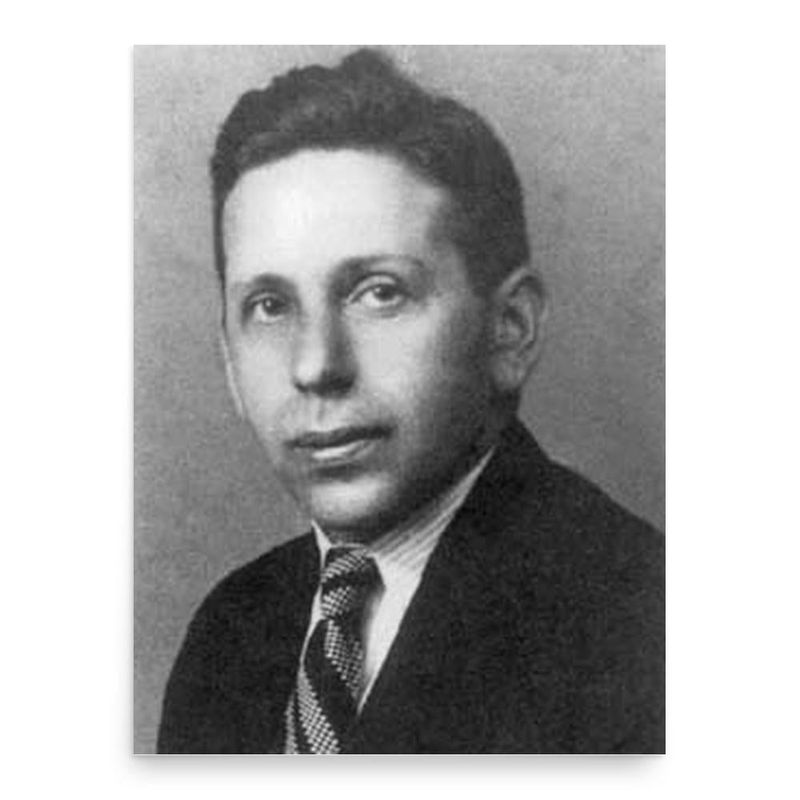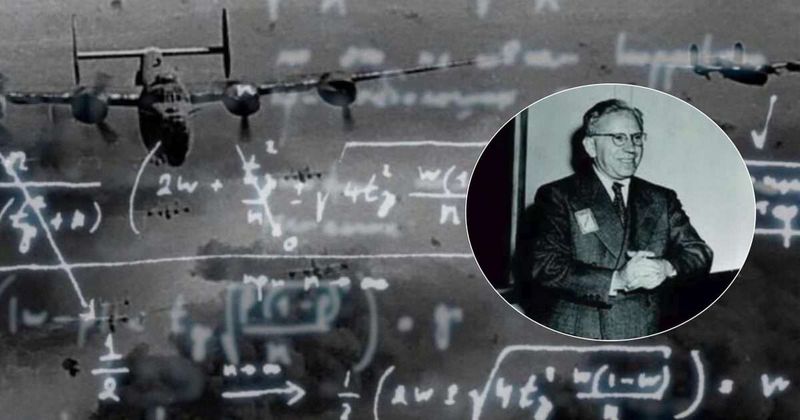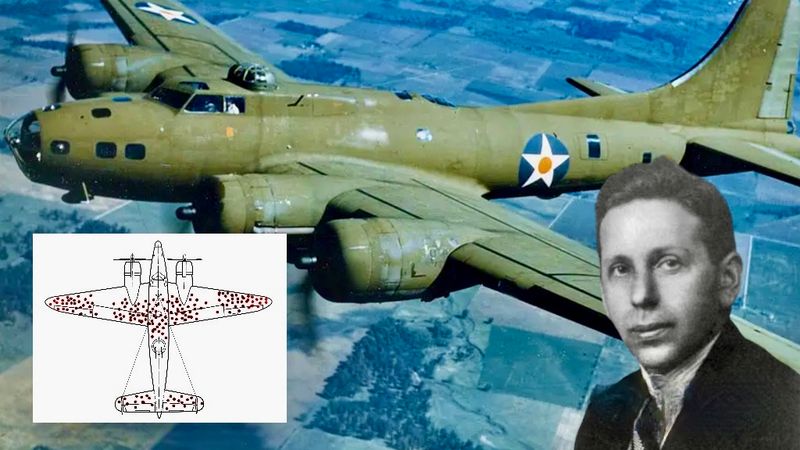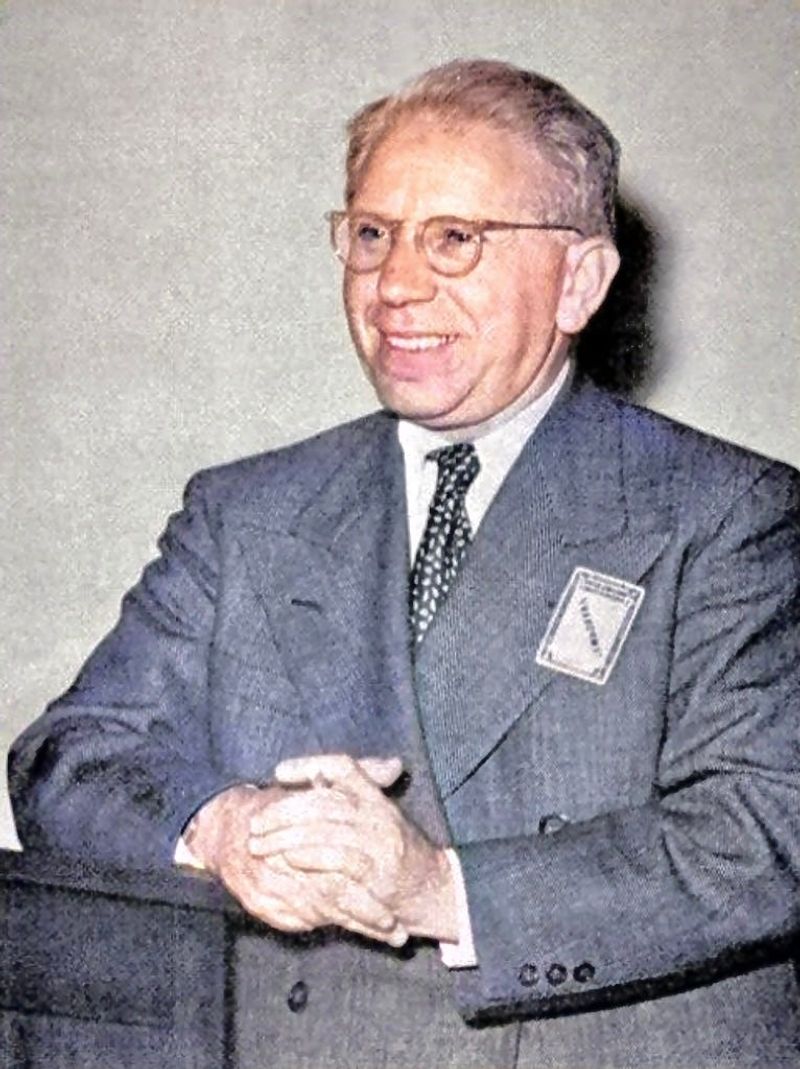During World War II, a quiet mathematician named Abraham Wald solved a puzzle that saved countless Allied bomber crews. When military officials wanted to add armor to planes, they looked at returning aircraft and planned to reinforce the most bullet-riddled areas. Wald’s brilliant insight turned their thinking upside down and changed how we understand data forever.
1. Jewish Mathematician Who Escaped the Nazis
Born in 1902 to a Jewish family in Cluj, Austria-Hungary (now Romania), Wald showed extraordinary mathematical talent from childhood. By his twenties, he had earned recognition as one of Europe’s brightest mathematical minds.
Rising antisemitism shattered his academic career. When Nazi influence spread across Europe, Wald faced increasing persecution and professional barriers. The same regime he would later help defeat first made him a refugee.
In 1938, the Cowles Commission at Colorado University arranged his escape to America. This narrow escape saved not just a brilliant mind but ultimately thousands of Allied airmen through his later work.
2. Revolutionized WWII Military Strategy
Wald’s Statistical Research Group operated from a nondescript Columbia University office building but transformed military operations. Beyond bomber survivability, his team tackled weapon reliability, supply logistics, and combat effectiveness.
His sequential analysis method reduced the number of test firings needed to verify weapon quality by up to 80%. This seemingly technical achievement meant faster deployment of reliable weapons to frontline troops.
Military leaders initially resisted his counterintuitive recommendations. “How could this civilian mathematician understand warfare?” they questioned. Yet his evidence-based approach eventually won over commanders who saw dramatic improvements when following his statistical guidance.
3. The Problem: Bombers Were Getting Shot Down
Allied bombers faced a deadly gauntlet of anti-aircraft fire and enemy fighters on every mission. Survival rates were terrifyingly low, with some bombing campaigns losing over 60% of their aircraft.
Military leaders knew they needed to add protective armor, but faced a crucial limitation: too much armor would make planes too heavy to fly effectively. Every extra pound reduced range, speed, and payload capacity.
The military needed a mathematical solution to determine exactly where armor would save the most lives without compromising mission capability.
4. The Military’s Flawed Logic
Military analysts gathered data by meticulously documenting every bullet hole on returning bombers. Their damage maps revealed a clear pattern – wings, tail sections, and rear fuselages were riddled with hits, while engines and cockpits showed remarkably few.
“The evidence seems obvious,” they reasoned. “Reinforce the most-hit areas to protect our planes!” This approach made intuitive sense to everyone involved.
The statistical team prepared implementation plans, ready to armor the most damaged sections shown in their carefully collected data.
5. Wald’s Brilliant Counterintuitive Insight
Abraham Wald quietly observed the military’s analysis and spotted the fundamental error everyone else had missed. The returning planes weren’t representative of all aircraft – they were the survivors.
“The absence of damage in certain areas isn’t good news,” Wald explained. “It means planes hit in those spots never made it back.” His mathematical mind recognized that missing data told the crucial story.
Planes struck in engines and control systems crashed, while those hit in less critical areas survived to be counted. The solution was clear: armor the areas showing the least damage on returning aircraft.
6. The Wald Effect: Survivorship Bias
Wald’s insight revealed a cognitive trap that affects us all – survivorship bias. We naturally focus on what we can see (the survivors) while overlooking what’s missing (the casualties).
Consider successful entrepreneurs who dropped out of college. We celebrate their stories without noticing the thousands of dropouts who failed. The survivors become visible while the casualties vanish from our analysis.
Military leaders implemented Wald’s recommendation, armoring engines and control systems. Bomber survival rates improved dramatically, saving countless lives through this mathematical revelation about what wasn’t there.
7. Wald’s Legacy: Beyond WWII
Abraham Wald’s work birthed the field of Operations Research – applying mathematical analysis to optimize complex real-world decisions. His statistical approaches revolutionized how organizations handle uncertainty and limited resources.
Financial institutions use his methods to assess investment risks beyond visible successes. Medical researchers apply his principles when studying treatment outcomes, ensuring they account for patients who don’t complete studies.
Modern artificial intelligence systems incorporate Wald’s insights when training on incomplete datasets. His mathematical framework for handling missing information remains fundamental to fields he could never have imagined.
8. Why His Story Matters Today
Survivorship bias traps lurk everywhere in modern life. Stock market gurus showcase their winning picks while quietly forgetting their losses. Self-help books feature exceptional success stories without mentioning thousands who followed identical advice and failed.
Social media amplifies this effect by showcasing highlight reels rather than complete pictures. Companies make dangerous decisions by studying only successful products and ignoring failed ones.
Wald’s approach teaches us to ask critical questions: What data am I not seeing? Who isn’t represented in this sample? What happened to the missing cases? This mental habit remains our best defense against misleading conclusions.








